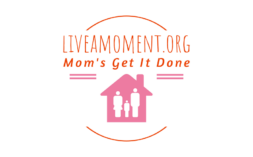Slip and fall accidents are among the most common causes of broken arms. When someone falls unexpectedly, the body responds naturally—often by reaching out with the arms to stop the fall. Severe fractures or sprains could result from this reflexive action.
Sadly, these injuries can have long-lasting consequences that hinder daily performance and usually require weeks or even months of rehabilitation.
Finding legal assistance is crucial to anyone recovering from a broken arm resulting from a fall. Speaking with the ideal slip and fall accident lawyers will help greatly with handling medical bills and lost wages. Knowing the difficulties victims experience, experienced lawyers may assist in obtaining fair compensation for the accident. This allows victims to concentrate on recovery, free from financial burden.
How Slip and Fall Accidents Cause Broken Arms
Slip and fall accidents can happen almost anywhere—on uneven terrain, wet flooring, or sidewalks with snow. When a fall happens suddenly, the body’s natural reaction is to extend the arms in an effort to stop more damage. This quick reaction puts a lot of strain on the wrist and arm bones and joints, often leading to fractures.

The injuries might range from dislocated joints to fractures that require surgery and long-term recovery. Older individuals, whose bones are more prone to fracture, have a greater chance of sustaining these injuries.
Areas Vulnerable to Fractures After a Slip and Fall Accident
Although just about a bone in any part of the body may end up being broken, some parts have a higher risk. They are listed below.
- Wrist Fractures: Many times, someone slips and uses their hands to catch themselves, greatly stressing the wrists. This might lead to fractures, particularly in the scaphoid or radius bones, which typically require casts or surgical intervention.
- Elbow Fractures: Falling backward or at an angle could cause one to land straight on the elbow. Such impacts can result in painful injuries like olecranon fractures, in which the elbow’s tip’s bone breaks.
- Shoulder Injuries: A forceful fall on the shoulder could cause dislocations or fractures. Many times, these injuries require physical rehabilitation and, in extreme cases, surgery.
Preventing Slip and Fall Accidents
Although accidents cannot always be avoided, following basic guidelines greatly lowers the possibility of falls and arm injuries:
- Ensuring that floors, hallways, and pathways are clutter-free will help to avoid trips and falls.

- Good lighting, particularly in stairways or entryways, lets people see where they are stepping, therefore lowering their risk of an accident.
- On wet or slippery grounds, shoes with an appropriate grip can assist in preventing falls.
- Repairing damaged steps, tiles, or uneven walkways reduces slip and fall risks both outside and inside.
Steps to Take After a Slip and Fall Incident
Should a fall occur, quick action is crucial to reduce the effects of injuries.
- Any arm pain or swelling should be checked by a doctor to look for probable fractures.
- Take pictures of the scene where the fall happened and gather contact details from any witnesses.
- Inform the management if the accident happens on commercial property so that an official record is created.
- Speaking with a slip and fall attorney can be a very important first step in managing the costs associated with an injury if someone is responsible for the accident.


